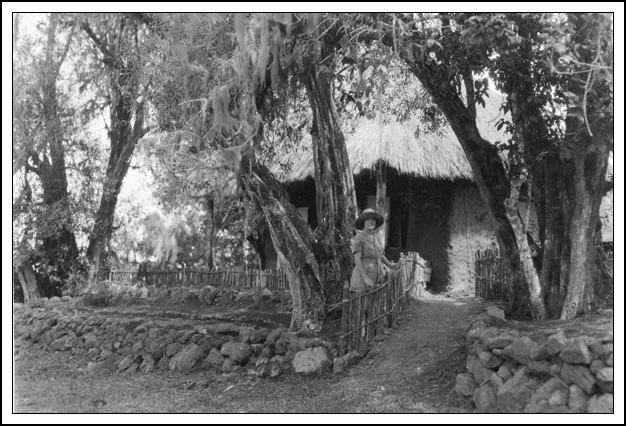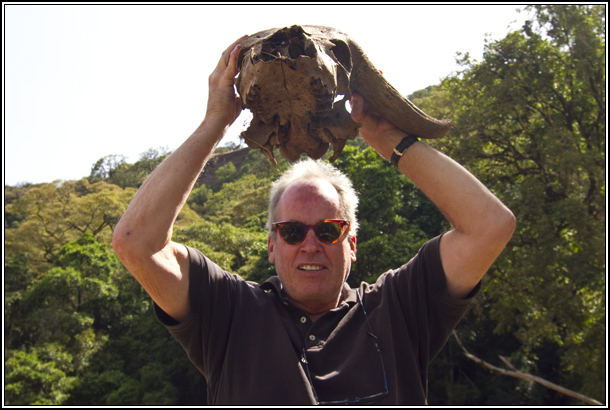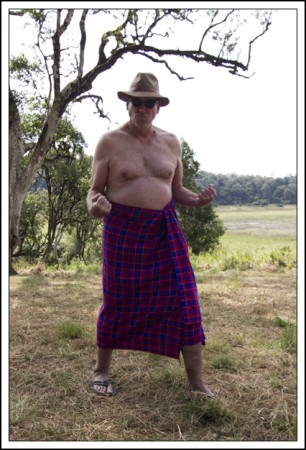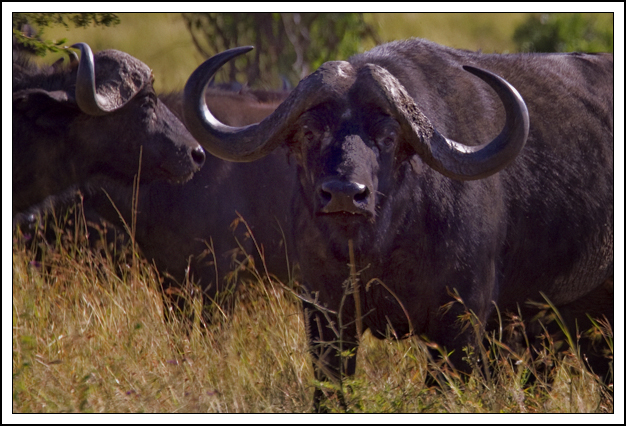There was nothing about Lake Paradise that suggested civilization. We seemed to be in another world, a Garden of Eden, in which it was easy to be good and happy, and in which men and animals lived at peace with one another.
–Martin Johnson
We were all anxious to see if anything remained of Martin and Osa Johnson’s 1924 camp. According to one book I’d read, they’d set up camp on a low sloping ridge on the southwest of the crater and here they built a small house with a fireplace in the center and a porch overlooking the lake as well as a separate kitchen, storehouse, garage, workshop, guest room, tool house, carpenter house, a building for the generator, an underground vault and, “the skyscraper of the village,” Martin’s film laboratory. Osa had also put in a 4-acre vegetable and flower garden.
She wrote that in the garden she grew “nasturtiums, cosmos, baby’s breath, cannas, carnations and roses. Cannas grew so profusely that I constantly had to thin them out and plant them farther and farther apart. Elephants often trod them down. I even planted canna bulbs out in the forest and there they throve, and I suppose are still thriving.
“I suppose that the winds and the birds have now carried the seeds of my garden throughout the forest, and I hope the crater is abloom with the flowers on which I spent so much care, and with which we left a part of our hearts.”
There was an obvious spot where we all agreed the Johnsons must have built their camp. It was just off the narrow road coming into Lake Paradise, a flat spot, dotted with old brown olive trees, where you had a magnificent view of most of the meadow. And it was on the southwest end of the shore.
We went over there early one morning and tromped around. The dry grass was knee high. Several areas, shaded by trees, looked like they’d been cleared and leveled. But there wasn’t any obvious signs of old foundations or the remnants of a chimney, which is what we were hoping to find. At one point I thought that perhaps we were looking on the wrong side of the road so I crossed over and started wandering off into the forest. I came over a rise and there before me where three elephants on their way to the meadow. I stood still and just looked at them, knowing that Calvin would have a cow if he knew what I was doing but so mesmerized that I didn’t do the logical thing which would have been to slowly back up and retreat.
Back in 1996, Calvin was leading the photographer and writer Peter Beard on a photo safari near his camp in the Mara when they were charged by an elephant. The whole thing was filmed (except when the cameraman dropped the camera and ran for his life) and is a popular video on YouTube. If you’re curious, I’ve included the video at the bottom of this post.
What you realize in looking at that video is how quickly things can go bad when you’re dealing with large animals like elephants. One minute they’re just standing there twitching their ears and the next minute they’re running you down and stomping on your chest. It’s amazing Beard survived the attack.
So I had all that on my mind as I stood there looking at the three cows. Like in the Beard attack, I was on foot and in the open. And, probably like Beard, I didn’t really feel like I was in imminent danger. But I’d seen the video; I knew better. So very, very slowly, while still facing the elephants, I began to back up, first getting off the elephant’s path to the meadow, and then just moving sideways, away from them, into the woods.
When I got back to where the others were still kicking around in the grass, Calvin asked me if I’d seen anything interesting on the other side of the road.
“Just a few elephants,” I said.
“Ah, good,” said Calvin. “Smelly ellies.”
I’m not sure he believed me. But that was fine with me.










Recent Comments